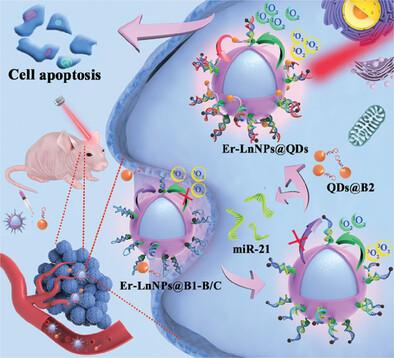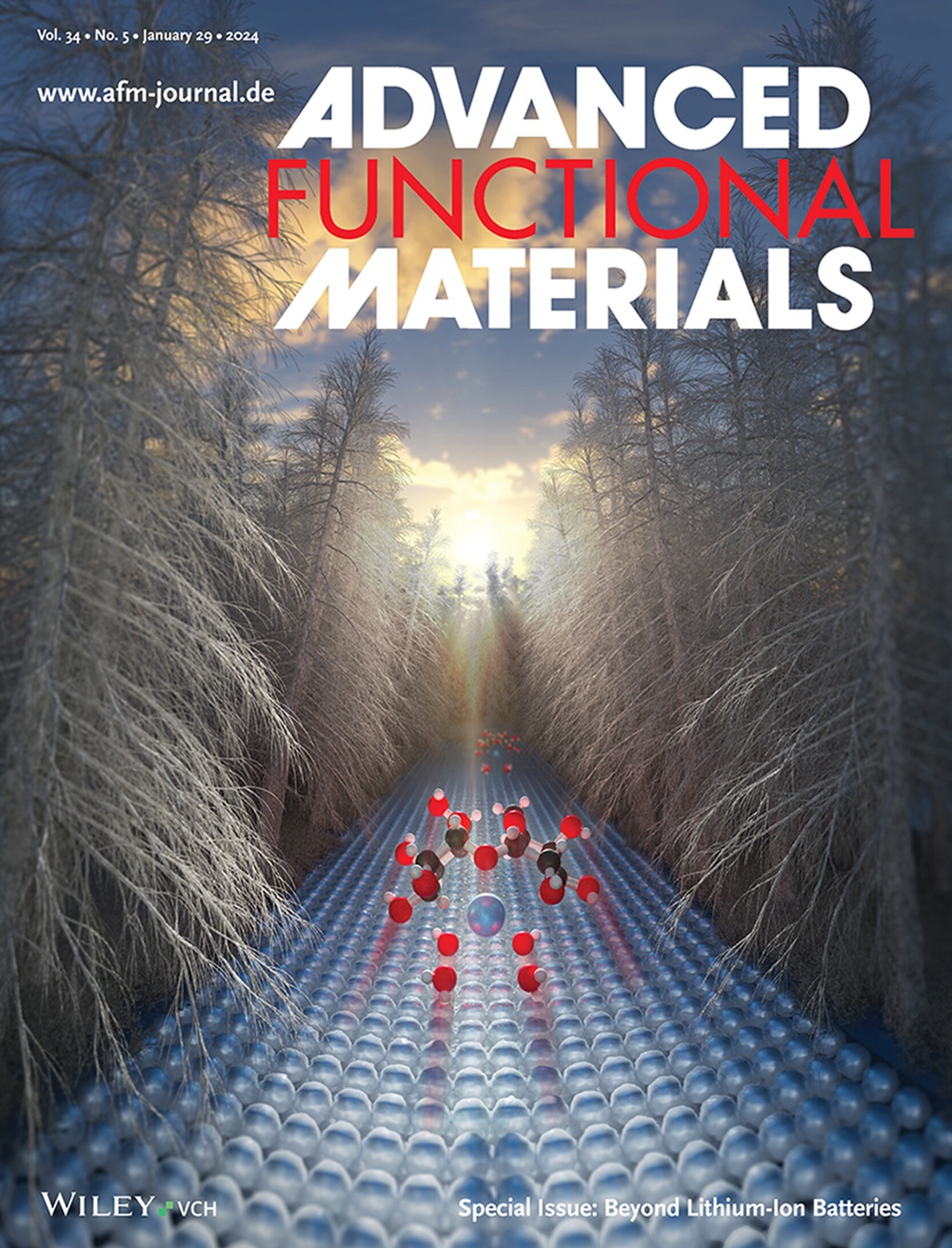miR-21-Trigged Precise Photodynamic Therapy Through a “Locking-Unlocking-Boosting” ROS Production Strategy
IF 18.5
1区 材料科学
Q1 CHEMISTRY, MULTIDISCIPLINARY
引用次数: 0
Abstract
Photodynamic therapy (PDT) stands out as a highly promising modality for tumor treatment, yet previous works have primarily centered around either boosting the production of reactive oxygen species (ROS) in tumor tissues or restricting it in normal tissues. The current challenge lies in the urgent need to achieve precise modulation of ROS production by simultaneously controlling both aspects. To achieve this goal, a precise PDT platform through a “locking-unlocking-boosting” ROS production strategy is presented, in which the generation of ROS is modulated by bidirectionally regulating the upconversion luminescence (UCL) of lanthanide-doped nanoparticles (LnNPs), thus ROS production is “locked” in normal tissues but “boosted” in tumor tissues. In detail, by introducing an energy acceptor BHQ3, the UCL is initially quenched to prevent Chlorin e6 (Ce6) from generating ROS. However, under the tumor microenvironment with overexpressed miR-21, LnNPs are sequestered from BHQ3 to “unlock” ROS generation and then assembled with QDs@B2, which functions as an antenna to sensitize LnNPs luminescence, to further “boost” ROS generation. With the assistance of spherical nucleic acids, this therapeutic agent effectively traverses the blood-brain barrier (BBB), enabling efficient PDT for glioblastoma.

通过 "锁定-解锁-增强 "ROS 生成策略,miR-21 引导精确光动力疗法
光动力疗法(PDT)是一种极具前景的肿瘤治疗方法,但以往的研究主要集中在促进肿瘤组织中活性氧(ROS)的产生或限制正常组织中活性氧的产生。目前的挑战在于迫切需要通过同时控制这两个方面来实现对 ROS 生成的精确调节。为实现这一目标,本文提出了一种通过 "锁定-解锁-增强 "ROS产生策略的精确光导治疗平台,即通过双向调节掺镧纳米粒子(LnNPs)的上转换发光(UCL)来调控ROS的产生,从而在正常组织中 "锁定 "ROS的产生,而在肿瘤组织中 "增强 "ROS的产生。具体来说,通过引入能量接受体 BHQ3,UCL 最初会被淬灭,以防止 Chlorin e6(Ce6)产生 ROS。然而,在miR-21过度表达的肿瘤微环境下,LnNPs被BHQ3螯合以 "释放 "ROS的产生,然后与作为天线的QDs@B2组装在一起,使LnNPs发光,从而进一步 "促进 "ROS的产生。在球形核酸的辅助下,这种治疗剂可有效穿越血脑屏障(BBB),从而实现对胶质母细胞瘤的高效局部光疗。
本文章由计算机程序翻译,如有差异,请以英文原文为准。
求助全文
约1分钟内获得全文
求助全文
来源期刊

Advanced Functional Materials
工程技术-材料科学:综合
CiteScore
29.50
自引率
4.20%
发文量
2086
审稿时长
2.1 months
期刊介绍:
Firmly established as a top-tier materials science journal, Advanced Functional Materials reports breakthrough research in all aspects of materials science, including nanotechnology, chemistry, physics, and biology every week.
Advanced Functional Materials is known for its rapid and fair peer review, quality content, and high impact, making it the first choice of the international materials science community.
 求助内容:
求助内容: 应助结果提醒方式:
应助结果提醒方式:


